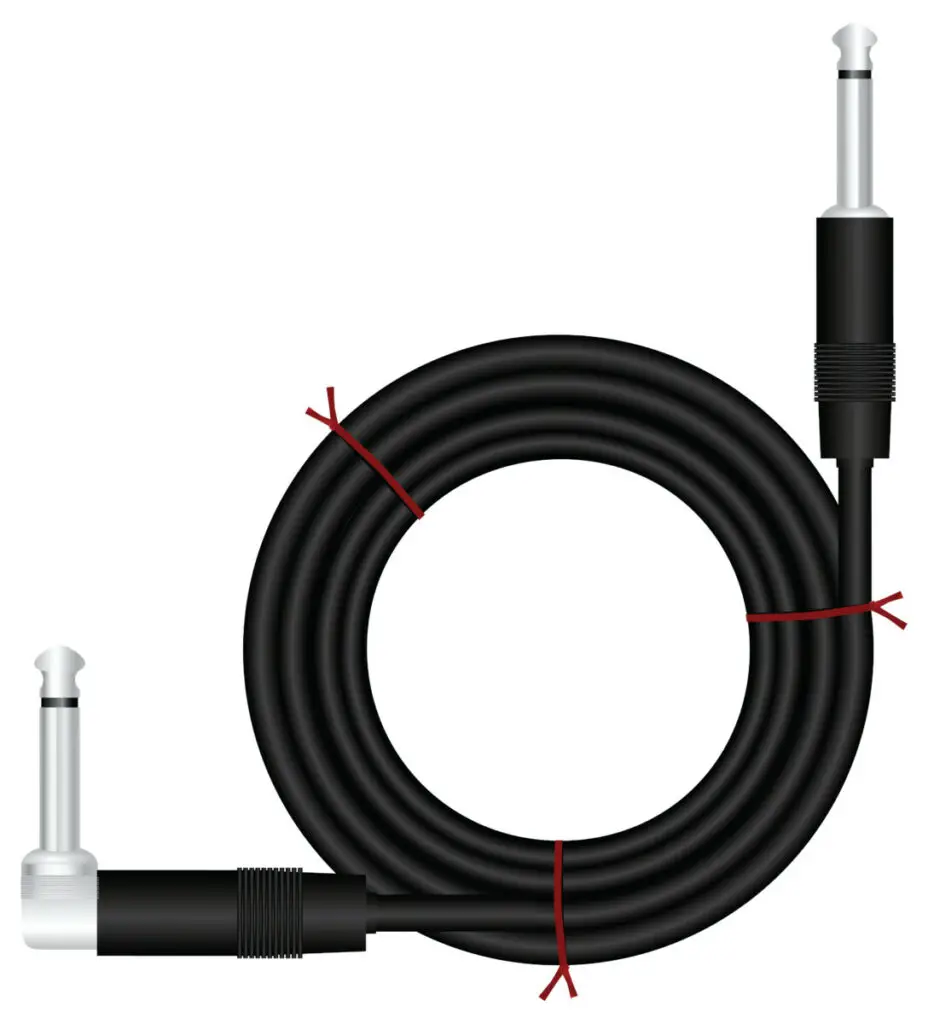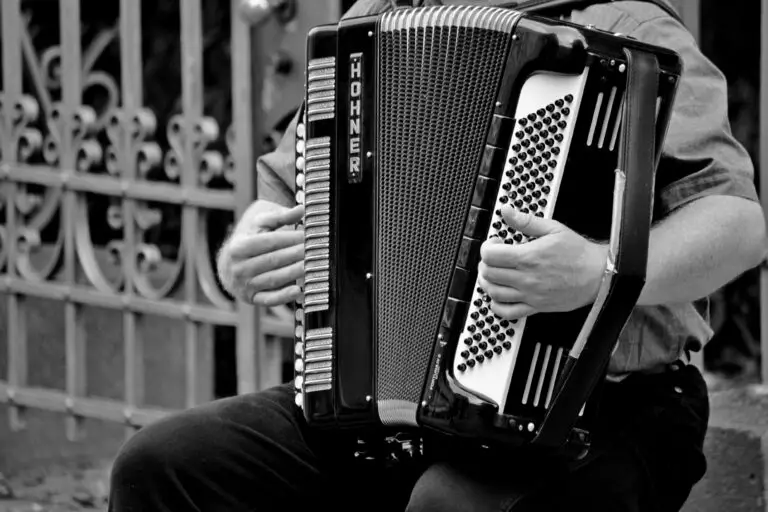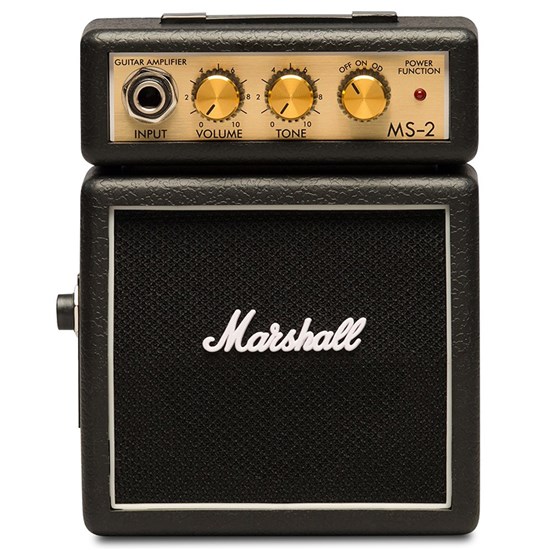Right Angle Guitar Cable vs Straight
Are you someone who plays the guitar as a hobby or wants to start playing in a band? When planning how you will play your guitar in any of these situations, you may wonder what the difference is between a right angle and a straight guitar cable. So, what differs between right-angle and straight guitar cables?
Right-angle guitar cables are bent at the end, giving them a lower profile and making them safer with most guitars. Straight cables have long straight ends for guitars and equipment with deeper plugs. Straight cables are the utility pick, while right angles are the more versatile option.
Whether you are an experienced guitar player or just getting started, there is a lot of noise about these different guitar cables. Many people insist on only using one cable type, and they might tell you that it is the only way to use your guitar. Below is information about both types of cables so you can decide which one is best for you.
What are the Differences Between a Right Angle and a Straight Guitar Cable?
First, we need to look at the differences between these two types of guitar cables. The main difference between the two is the cable’s ends. The differences in the ends of the cables make them tailored to specific situations and give each of them its name.
The straight guitar cable is the older of the two cables and is simpler than a right-angle cable. The cable comprises a wire with a straight jack at the end. This jack is simple and meant to connect to a variety of guitars and types of equipment.
The end of this straight cable is longer than a right-angle cable. The other main difference between the straight cable and its right-angle brother is the utility of the straight cable. It can be used with any equipment and guitar, making it the more popular cable choice.
The right-angle cable shares a purpose with the straight-ended cable but differs in other ways. The end of the cable is shorter and bent at a right angle, which is how it got its name. This gives the cable a lower profile and puts less stress on the guitars and amps that it is connecting. While the straight cable is utilitarian, the right angle is more of a specialist piece of equipment. It can’t be used with every type of guitar or equipment.
Remember that you can buy guitar cables with a straight jack on one end and a right angle on the other. This allows a guitarist to benefit from the specialization of the right-angle cable while playing it safe with the utility of the straight-ended cable.
What are the Pros and Cons of Using a Right Angle Cable?
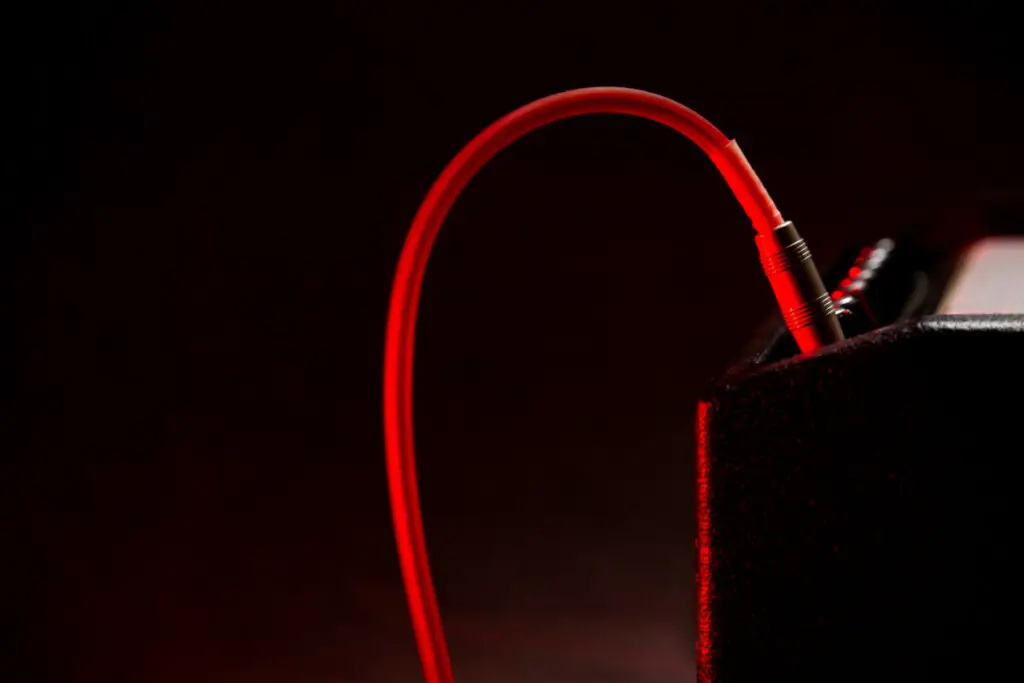
While a right-angle cable is a great specialist choice, it is not the best option for every situation. Here are some pros and cons you should consider before buying a cable with a right-angle jack.
Pros
- Low Profile: The cable does not extend far past the instrument or equipment.
- Durability: These cables tend to last longer than other cables and cause less wear on the guitar and equipment.
- Ease of Use: The cable is easy to use with a guitar strap and does not provide a tripping hazard.
- Visuals: It is easier to hide a cable with a right-angle end while performing, which makes managing equipment inputs a breeze.
Cons
- Limited Use: Not usable with all guitars.
- Difficulty to Replace: It is relatively hard to find and repair right-angle cables.
- Odd Cable Placement: The low profile of the right angle can cause the cable to get trapped in dials and buttons on equipment.
What are The Pros and Cons of Using a Straight Cable?
The straight-ended guitar cable is a safe and traditional choice for guitar players. Here are some reasons why you should and should not use this cable type.
Pros
- Usable Everywhere: All guitars and most, if not all, types of equipment like speakers, amps, and pedals work with straight cables.
- High Profile: The cable is above the equipment and the guitar, preventing it from being caught in dials and switches while in use.
- Ease of Repair: Simple end is easy to repair and replace if it wears out.
Cons
- Stress: Wears out quicker and can damage guitars if used carelessly.
- Not Discrete: The cable is prominent and must be accounted for during a performance since it is trickier to hide in a guitar strap or underfoot.
What Are The Best Right Angle and Straight Cables to Buy?
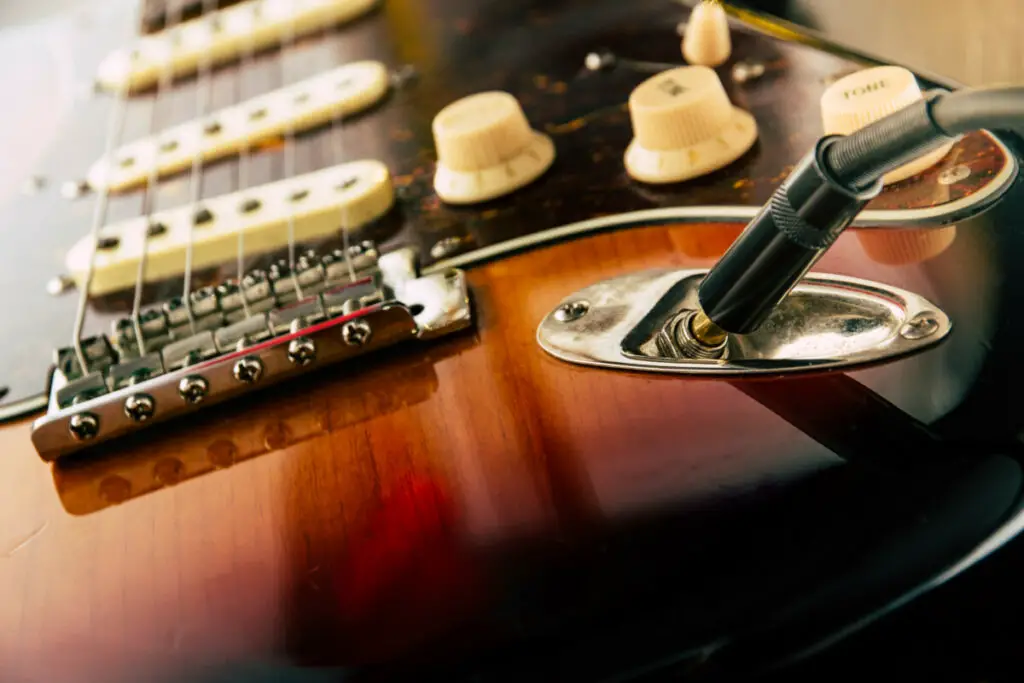
Having looked at the differences and benefits of choosing between a right-angle and a straight-ended guitar cable, you might wonder where you can purchase one. We have listed a handful of popular and high-value guitar cables below to help you get started.
What are the Best Guitar Cables?
The best guitar cable is the Mogami Gold Instrument Cable. The ends of this double straight jack cable are plated with gold, which may make the sound produced travel better. It also makes it an expensive option, as this 10-foot cable costs around $70.
- with Black Epoxy Finish Gold-plated Plugs
- 1/4″ TS Male-1/4″ TS Male
- Audio Cable
- 10′ Long
Another cable to take a look at is the New Bee Guitar Cable. It is one of the best-selling guitar cables on Amazon. The cable comes with a straight and right-angle end. It only costs about $13.
- [Low Noise High Fidelity] New bee guitar cord with 22AWG oxygen-free-copper center conductors provides enhanced signal transfer, the PVC insulation material and the high-density stranded copper double shield provide noise rejection for quiet operation
- [Ideal for Choice] New bee 1/4 straight and right angle metal connectors, ensures a secure connection in any instrument, pedal, or amp jack. L shape great fro on stage guitar stands.
- [Wide Compatible] Suitable for mixer, power amplifier, microphone, effector, decoder, equalizer, electoronic organ, electric guitar, electric bass and other electronic equipments. Widely used in the installation of smart home, karaoke speaker, professional stage audio, etc.
- [Easy Disassemble] Making incidental repairs quick and easy! Very nice, flexible cable!
- [Dont Hesite to Order] 24 hours customer services and professional technology team are standing by.
What are the Best Budget Guitar Cables?
The BOSS Instrument Cable is one of the best budget cable options that you can choose from. This cable only costs between $16 and $20 and is made out of high-quality materials. The cable is made with double-ended right-angle jacks, so make sure your equipment is compatible before buying it.
- Patch/pedal cable—right-angle 1/4-inch connectors, 1 ft./30 cm length. Also available in 3 ft./1 m (BIC-3AA) length.
- Engineered to preserve your tone, BOSS cables deliver superior performance for guitar, bass, and other musical applications.
- Studio-grade, oxygen-free copper core wire transfers every detail, while custom-designed connectors with 24K gold-plated contacts ensure the most precise sound reproduction available.
- The heavy-duty braided shield provides both ultra-quiet operation and lasting durability you can count on.
- Lifetime guarantee
Another choice is the Fender Deluxe Instrument Cable. This cable only costs about $20. This cable has a mixed right angle and straight-ended cable end, letting you enjoy the best of both worlds.
- Made with the highest quality materials to deliver durability, conductance and transparency
- 95% oxygen-free braided shielding for crystal-clear audio
- Custom kink-resistant 8mm tweed Jacket
- 20 gauge conductor for ultimate signal path strength
- 24K gold-plated connectors that won’t tarnish or degrade your sound
